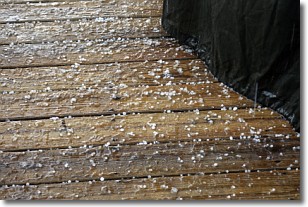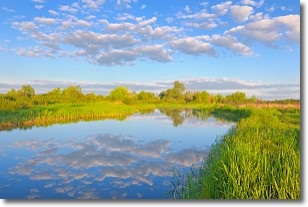Weather Alert in New Mexico
Fire Weather Watch issued May 12 at 4:35AM MDT until May 13 at 9:00PM MDT by NWS Albuquerque NM
AREAS AFFECTED: Middle Rio Grande Valley; West Central Basin and Range; Sandia and Manzano Mountains
DESCRIPTION: ...RED FLAG WARNING TODAY FROM 3 TO 8 PM FOR THE WEST CENTRAL MOUNTAINS ALONG AND WEST OF THE CONTINENTAL DIVIDE DUE TO STRONG WIND AND LOW HUMIDITY... ...FIRE WEATHER WATCH TUESDAY AND WEDNESDAY FROM 11 AM TO 9 PM FOR THE WEST CENTRAL MOUNTAINS, BASIN, AND RANGE, MIDDLE RIO GRANDE VALLEY, AND THE SANDIA AND MANZANO MOUNTAINS ALONG AND SOUTH OF HIGHWAY 60 DUE TO STRONG WIND AND LOW HUMIDITY... .Wind speeds will become strong west of the continental divide this afternoon, then become strong areawide Tuesday and Wednesday, as an upper level trough draws the jetstream over New Mexico with strong and very dry southwest winds at the surface. A gusty Pacific cold front will cross on Wednesday shifting the wind direction out of the west, then out of the northwest late in the day. After a high temperature around 8 degrees above the 30-year average in Gallup today, highs will vary from near average to around 10 degrees above across the Watch area on Tuesday, then from 3 degrees above average in Socorro County on Wednesday to around 8 degrees below average along the Arizona border. Wind speeds will also weaken some on Wednesday, but most locations will still experience single digit humidities Wednesday afternoon. The National Weather Service in Albuquerque has issued a Fire Weather Watch...which is in effect from Tuesday morning through Tuesday evening. A Fire Weather Watch has also been issued from Wednesday morning through Wednesday evening. * AREA AND TIMING...West Central Basin and Range (Zone 109), Middle Rio Grande Valley (Zone 106), and the Sandia and Manzano Mountains (Zone 124) along and south of Highway 60 both Tuesday and Wednesday from 11 AM to 9 PM. * 20 FOOT WINDS...For Tuesday: southwest 25-35 mph with gusts up to 50 mph. For Wednesday: west and eventually northwest 20-30 mph with gusts up to 40 mph. * RELATIVE HUMIDITY...For Tuesday: 9-15 percent. For Wednesday: 5-10 percent. * IMPACTS...Any fires that develop will likely spread rapidly and will be hard to control. Long range spotting and extreme fire behavior will be possible. Outdoor burning should not be done..
INSTRUCTION: Please advise the appropriate officials or fire crews in the field of this Fire Weather Watch.
Want more detail? Get the Complete 7 Day and Night Detailed Forecast!
Current U.S. National Radar--Current
The Current National Weather Radar is shown below with a UTC Time (subtract 5 hours from UTC to get Eastern Time).

National Weather Forecast--Current
The Current National Weather Forecast and National Weather Map are shown below.

National Weather Forecast for Tomorrow
Tomorrow National Weather Forecast and Tomorrow National Weather Map are show below.

North America Water Vapor (Moisture)
This map shows recent moisture content over North America. Bright and colored areas show high moisture (ie, clouds); brown indicates very little moisture present; black indicates no moisture.

Weather Topic: What is Sleet?
Home - Education - Precipitation - Sleet
 Next Topic: Snow
Next Topic: Snow
Sleet is a form of precipitation in which small ice pellets are the primary
components. These ice pellets are smaller and more translucent than hailstones,
and harder than graupel. Sleet is caused by specific atmospheric conditions and
therefore typically doesn't last for extended periods of time.
The condition which leads to sleet formation requires a warmer body of air to be
wedged in between two sub-freezing bodies of air. When snow falls through a warmer
layer of air it melts, and as it falls through the next sub-freezing body of air
it freezes again, forming ice pellets known as sleet. In some cases, water
droplets don't have time to freeze before reaching the surface and the result is
freezing rain.
Next Topic: Snow
Weather Topic: What are Stratocumulus Clouds?
Home - Education - Cloud Types - Stratocumulus Clouds
 Next Topic: Stratus Clouds
Next Topic: Stratus Clouds
Stratocumulus clouds are similar to altocumulus clouds in their
fluffy appearance, but have a slightly darker shade due to their additional mass.
A good way to distinguish the two cloud types is to hold your hand out and measure
the size of an individual cloud; if it is the size of your thumb it is generally
an altocumulus cloud, if it is the size of your hand it is generally a
stratocumulus cloud.
It is uncommon for stratocumulus clouds to produce precipitation, but if they do
it is usually a light rain or snow.
Next Topic: Stratus Clouds
Current conditions powered by WeatherAPI.com




